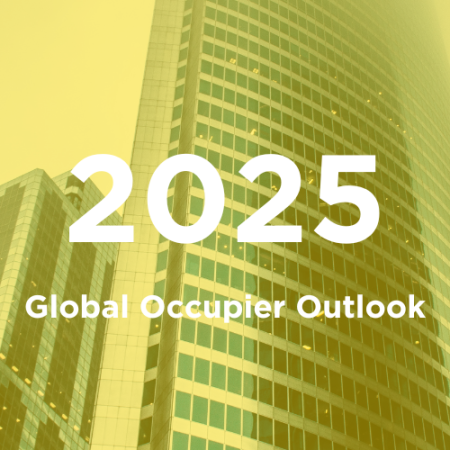After a chastening few years, the tide is turning. The cyclical factors weighing on property values and investment activity are beginning to unwind, and the nascent recovery in real estate capital markets should gather momentum in the coming year.
This is the widely held view of the Savills global research network. Across all markets and all sectors, nearly three-quarters of respondents to our annual survey expect investment activity to improve next year. A similar proportion also anticipates a recovery in capital values.

After several years during which the occupational and investment markets moved out of sync, we expect fundamentals to anchor the market once more in 2025. Investors tend to follow occupiers in real estate, and this trend is reflected in our survey results. Sentiment on capital markets activity next year – underpinned by expectations for investment and capital values – is strongly correlated with expectations in occupational markets (take-up and rents).
Recovery is strongest in advanced economies
Capital markets in advanced economies are poised for a more robust recovery. Interest rate dynamics have dominated the recent narrative in these regions, driving commercial property prices lower, irrespective of the fundamentals. Take-up and rents have been more resilient in many of these markets, particularly for prime assets. The pivot in global interest rates should neutralise this trend and support stronger growth in investment and capital values next year.
By contrast, in emerging markets such as India, the occupational backdrop remains a key driver of investor activity, underpinned by strong economic growth and significant catch-up potential. This will continue to attract investors who are both willing and able to enter these relatively immature but fast-growing markets.
However, the positive outlook is not ubiquitous across all markets. In Hong Kong and mainland China, structural challenges to growth, coupled with oversupply concerns across the core real estate sectors, will continue to weigh on both occupational and investment market activity in 2025.
Offices back in favour for 2025
From a sectoral perspective, we are most optimistic about prime offices. They have generally outperformed expectations in a post-pandemic world, underpinned by an ongoing flight to quality from occupiers. In many global cities, a lack of available stock should support rental growth and investment opportunities before the development cycle turns. This view is reflected in our top investment picks, with well-located prime offices expected to be a key theme for core strategies next year.
We also anticipate better outcomes across secondary offices. The repricing in asset values has largely run its course, and this is attracting value-add and opportunistic investors with a manage-to-core strategy, or a view to repurposing assets into alternative uses. Opportunistic investors will also be looking to acquire deeply discounted assets in distressed markets.
Investors continue to embrace ‘beds and sheds’
Demand for the residential and industrial & logistics sectors – “beds and sheds” – remains strong, despite a potential normalisation in market conditions, with affordability concerns necessitating a moderation in rental growth across some markets.
Nevertheless, the fundamentals remain compelling; ongoing structural trends in the global economy – ranging from demographic change and technological development to geoeconomic fragmentation – are largely supportive of future demand for both these sectors.
These structural trends favour core investors, so it’s no surprise to see the industrial and logistics sector highlighted as a top pick in many markets for core strategies next year. The various living sectors are also prominent in more mature, liquid markets. Supply-side dynamics are important in these sectors, providing opportunities to developers who are able to break ground in the most supply-constrained markets.
Finally, investors retain some positivity regarding retail performance next year. They will, however, continue to be selective when deploying capital into what is a relatively diverse and fast-changing sector, which often favours investors with a higher risk-return profile. And opportunities abound across alternative real estate investments, including the data centre sector, which is being supercharged by the expansion of artificial intelligence (AI).



